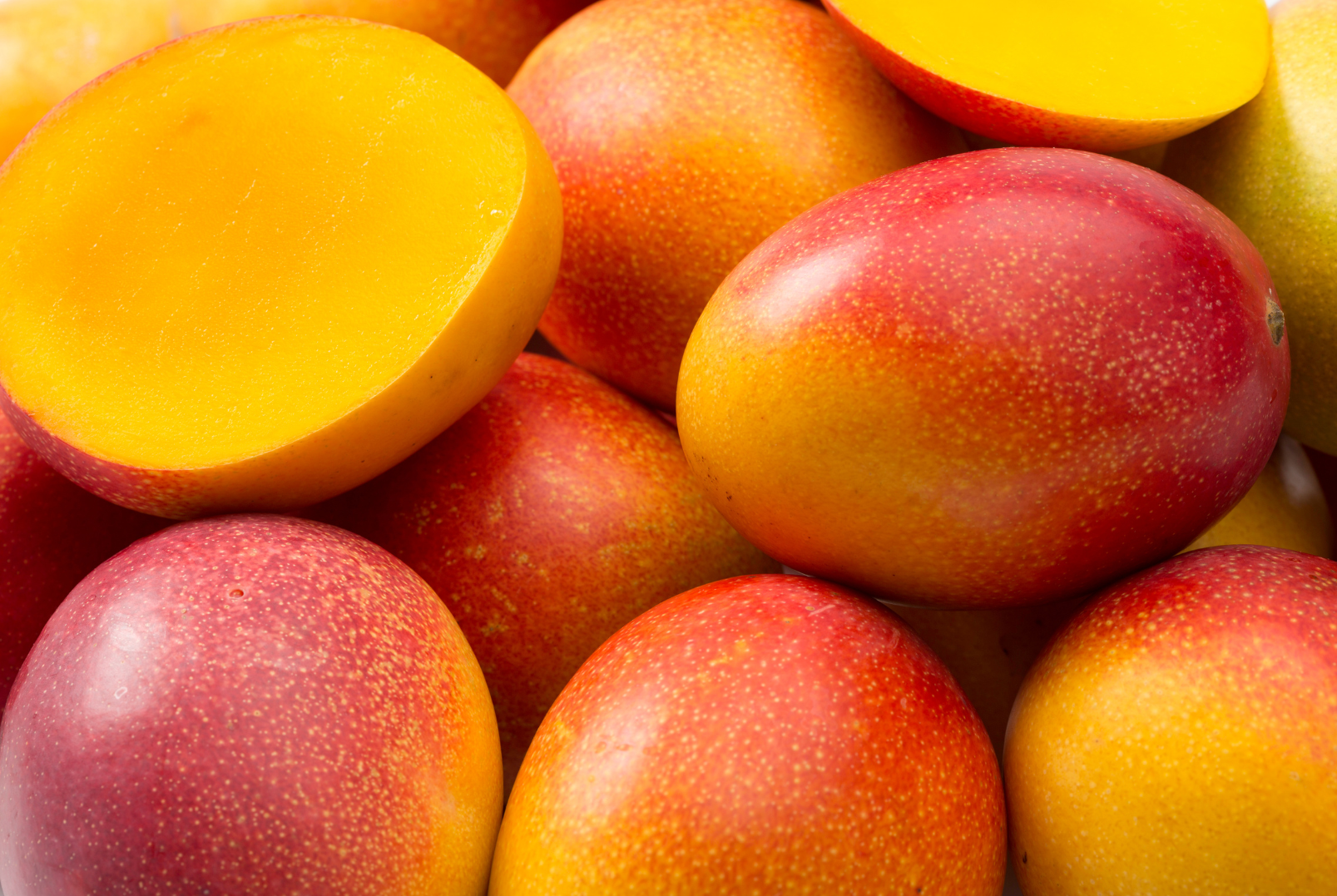Nutritional Value and Health Benefits of Mango

This post is also available in:
This post is also available in:
![]() Español (Spanish)
Español (Spanish) ![]() Français (French)
Français (French) ![]() Deutsch (German)
Deutsch (German) ![]() हिन्दी (Hindi)
हिन्दी (Hindi) ![]() العربية (Arabic)
العربية (Arabic) ![]() Ελληνικά (Greek)
Ελληνικά (Greek)
Many consider mango the “king” of fruits since it is consumed fresh and used in producing desserts, fruit juices, and marmalades. Additionally, it is also a rich source of vitamins A, B, and C, sugar, carbohydrates, protein, fats, fibre, water and many more.
More specifically, based on USDA, 1 fruit (336 g) contains:
- Energy: 202 kcal – 840 kJ
- Water: 281 g
- Protein: 2.76 g
- Fibre, total dietary: 5.38 g
- Sugars, total including NLEA: 46 g
- Potassium: 564 mg
- Calcium: 37 mg
- Phosphorus: 47 mg
- Magnesium: 33.6 mg
- Iron: 0.538 mg
- Carotenoids: 61 mg
Mangoes contain some trace amounts of selenium, copper, zinc, and manganese. Regarding the vitamins, it contains 122 mg of vitamin C (more than 50% of the recommended daily intake (RDI), 181 μg vitamin A and 3.02 mg of vitamin E.
Except for being a delicious fruit, numerous health benefits for humans health are related to its consumption. It can:
- Reduce the risk of (colon, breast, leukaemia and prostate) Cancer and Boost the Immune System thanks to the antioxidants (beta-carotene) and high levels of vitamins C and A that mango contains.
- Reduce Cholesterol thanks to the high levels of fibre and vitamin C that fruit consumption provides.
- Improve eye and skin health as well as digestion
- Helps prevent anaemia
- Promote heart health (cardiovascular system) and lower blood pressure
Despite the many health benefits, mangos, like every other food, should be consumed rationally. While there are very few cases of allergic response, it is best to peel the fruit and not consume the skin containing small amounts of urushiol.
References
https://fdc.nal.usda.gov/fdc-app.html#/food-details/169910/nutrients
Find more information in the book: “Success in Agribusiness: Growing Mango successfully” written by James Mwangi Ndiritu
Codex Alimentarius Commission. General Principles of Food Hygiene CXC 1-1969. 2021.
De Graaf J. Developing a Systems Approach for Sternochetus mangiferae (Coleoptera: Curculionidae) in South Africa. J Econ Entomol. 2010; 103(5):1577–85.
Dias, C.S.; Rodrigues, R.G.; Ferreira, J.J. What’s new in the research on agricultural entrepreneurship? J. Rural. Stud. 2019, 65, 99–115.
FAO. The Future of Food Safety; FAO: Rome, Italy, 2019.
Grové T, De Beer MS, Daneel MS, Steyn WP. Scale and mealybug survey on mango in Mpumalanga and Limpopo Provinces South Africa. Acta Hortic. 2013; 1007:377–84.
Grové T, De Villiers EA, Daneel MS. Mango. In: Prinsloo GL, Uys VM, editors. Insects of cultivated plants and natural pastures in Southern Africa. Pretoria: Entomological Society of Southern Africa; 2015a. p. 574–88.
Grové T, De Villiers EA, Schoeman PS. Litchi. In: Prinsloo GL, Uys VM, editors. Insects of cultivated plants and natural pastures in Southern Africa. Pretoria: Entomological Society of Southern Africa; 2015b. p. 554–9.
Grové T, De Beer MS, Joubert PH. Monitoring fruit flies in mango orchards in South Africa and determining the time of fruit infestation. Acta Hortic. 2009; 820:589–96. .
Grové T, De Beer MS. Insect pests affecting the production of mango in South Africa. Acta Hortic. 2017b; 1183:297–304.
Grové T, De Beer MS. Species composition and abundance of fruit flies (Diptera: Tephritidae) in subtropical fruit orchards in the Mbombela Local Municipality South Africa. Fruits. 2019; 74(1):18–24
Haran J, Grové T, Van Noort S, Benoit L, Addison P. Natural biocontrol of fruit flies in indigenous hosts: A perspective for population control in the agroecosystem. Biol Control. 2019; 137:1–6.
Henri, D. C., Jones, O., Tsiattalos, A., Thebault, E., Seymour, C. L., van Veen, F. J. F. F., et al. (2015). Natural vegetation benefits synergistic control of the three main insect and pathogen pests of a fruit crop in southern Africa. J. Appl. Ecol. 52, 1092–1101.
Hill MP, Macfadyen S, Nash MA. Broad spectrum pesticide application alters natural enemy communities and may facilitate secondary pest outbreaks. PeerJ. 2017; 19(5):e4179.
Joubert PH, Daneel MS, Grové T. Progress towards Integrated Pest Management (IPM) on mangoes in South Africa. Acta Hortic. 2000;509:811–8.
Joubert E, Grové T, Booysen G. Evaluation of fruit fly (Diptera: Tephritidae) monitoring systems on mango in Limpopo Province South Africa. J Agric Sci Technol. 2015;B5:653–63.
Louw CE. The mango seed weevil, Sternochetus mangiferae (Fabricius) (Coleoptera: Curculionidae); understanding the pest in order to ensure effective control measures. Acta Hortic. 2013;992:441–57.
Louw E. Evaluation on the efficacy of different chemicals on gall fly larvae in mangoes. Subtrop Fruit J. 2021;30:18–20.
Kibira, M., Affognon, H., Njehia, B., Muriithi, B., Mohamed, S., and Ekesi, S. (2015). Economic evaluation of integrated management of fruit fly in mango production in Embu County, Kenya. Afric. J. Agric. Resour. Econ. 10, 343–353
King, T.; Cole, M.; Farber, J.M.; Eisenbrand, G.; Zabaras, D.; Fox, E.M.; Hill, J.P. Food safety for food security: Relationship between global megatrends and developments in food safety. Trends Food Sci. Technol. 2017, 68, 160–175.
Nutritional Value and Health Benefits of Mango
Mango Tree Information and Variety Selection
How to cultivate mangos for profit – Mango production – An overview
Planning and Planting a Mango Orchard
Mango Water Requirements and Irrigation Systems
Most Common Pests Affecting Mangoes









































































